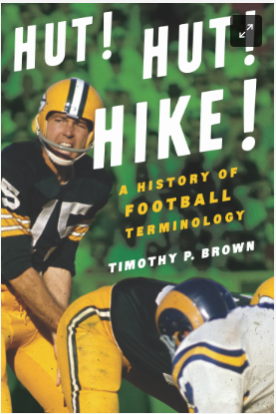The game of baseball has a long and storied history of its players, teams and managers. The stats, the championships, pitching duels and so much more make this one of the most interesting items to study and watch.
Sports History
The Behind the Plate Stopper with the Big Stick
Born in 1947, Fisk's talent bloomed early. Drafted by the Boston Red Sox in 1967, he quickly rose, captivating fans with his raw power and defensive agility. In 1972, he burst onto the scene as a unanimous Rookie of the Year, setting the tone for a career total of highlights.
Fisk's offensive prowess was undeniable. He belted 376 career home runs, including a then-record 351 for a catcher. His 1985 season with the Chicago White Sox saw him launch a career-high 37 homers and drive in 107 runs, earning him a Silver Slugger Award. Throughout his career, Fisk consistently anchored lineups, his bat feared by pitchers across the league.
Behind the plate, Fisk was a wall. He held the record for most games caught (2,226) for 23 years, displaying a keen understanding of the game and the uncanny ability to calm even the fiercest pitching firestorms. His throws were laser-sharp, snaring base stealers with the efficiency of a seasoned hunter. He earned respect and admiration from pitchers and teammates, becoming a true leader on the field.
But Fisk's legacy is best encapsulated in that one swing in Game 6 of the 1975 World Series. Facing the Cincinnati Reds with two outs and the Boston Red Sox down by one in the bottom of the 12th inning, Fisk connected with a Dennis Eckersley fastball, sending it soaring toward left field. With a swing that seemed to defy gravity, he willed the ball fair, erupting into his iconic "waving" gesture as it cleared the wall and hit the foul pole. The stadium erupted in a moment etched forever in baseball history, Fisk and the Red Sox winning 7-6, forcing a Game 7 in the World Series with one legendary swing.
Fisk's career extended beyond that one moment, though. He played 24 seasons, amassing 13 All-Star appearances, three Gold Glove Awards, and even a stint as a designated hitter later in his career. He retired in 1993, his name forever linked to Fenway Park, and in 2000, he was inducted into the Baseball Hall of Fame.
Greg Maddux The "Professor" on the Mound
-Path to the Big Leagues
Per Baseball Reference Maddux was drafted by the Chicago Cubs in the 2nd round of the 1984 MLB June Amateur Baseball Draft out of Valley High School in Las Vegas, Nevada. He made his MLB debut on September 2, 1986 against the Houston Astros and became a fixture on the Cubs staff the following season appearing in 30 games.
-Pinpoint control and dominance:
Maddux wasn't a flamethrower, but his accuracy and ability to locate his pitches frustrated batters. He won four Cy Young Awards in a row (1992-1995), a feat only matched by Randy Johnson.
-Atlanta Braves Era: His most successful stretch came with the Atlanta Braves (1993-2003). They won the National League West title every year during his tenure, reaching the World Series three times and winning it in 1995.
-Accolades and Longevity:
A stellar defensive player, Maddux holds the record for most Gold Glove Awards by a pitcher (18). He was an All-Star eight times and led the league in starts a record seven times. Remarkably durable, he only spent 15 days on the disabled list throughout his career.
-Career Highlights:
While never reaching 20 wins in a season more than twice, Maddux consistently piled up wins with a remarkable 18 seasons of at least 15 wins. He also holds the record for most seasons leading the league in games started (7).
Greg Maddux retired in 2008 and was inducted into the Baseball Hall of Fame in 2014. He's remembered as one of the smartest and most effective pitchers ever to play the game.
-Summary of Greg Maddux Career
Greg Maddux career sketch by the Society for American Baseball Research. Originally drafted in 1984 by the Chicago Cubs, Maddux won 18 Gold Gloves, four Cy Young Awards, four ERA titles, was an eight-time All-Star, and was on the 1995 World Series Champion Atlanta Braves. Born April 14, 1966 and inducted into the Baseball Hall of Fame, he is one of the top MLB players to have worn the Number 31 Jersey.
Mel Ott A Tower of Power and a Giant of the Game
Ott's journey began as a young phenom, making his major league debut at the age of 18. He quickly displayed his prodigious power, hitting 34 home runs in his first full season, a rookie record at the time. Throughout his career, Ott amassed a staggering 511 home runs, ranking him among the top ten in major league history at the time of his retirement. His consistent hitting prowess was undeniable, reaching the 100-RBI mark 12 times and leading the National League in home runs four times.
Beyond his power, Ott showcased remarkable consistency, playing in over 2,000 games and finishing with a career batting average of .304. He was a valuable contributor on both offense and defense, winning a Gold Glove Award in 1943 for his exceptional play in right field. His leadership qualities also shone through, serving as team captain for several years and earning the respect of his teammates and coaches alike.
Ott's legacy extends beyond statistics and accolades. He played a pivotal role in the Giants' success, leading them to the National League pennant in 1951. His dedication to the team and his consistent performance endeared him to the fans, becoming a beloved figure in both New York and San Francisco during the Giants' relocation in 1958.
After retiring as a player, Ott remained involved with the Giants in various capacities, including coaching and scouting. He continued to share his knowledge and passion for the game with younger generations, further solidifying his place in the Giants' rich history.
Mel Ott's career embodies the power, consistency, and dedication that define baseball greatness. He was a giant of the game, leaving behind a legacy of towering home runs, clutch performances, and unwavering loyalty to his team. His story continues to inspire young players, reminding them of the rewards that come with hard work, dedication, and the sheer joy of hitting a baseball.
Wes Unseld The Hall of Fame Legend who Defined Grit and Leadership on the Court
Drafted by the Baltimore Bullets (later Washington Wizards) in 1968, Unseld made an immediate impact, becoming only the second player in NBA history (after Wilt Chamberlain) to be named Rookie of the Year and Most Valuable Player in the same season. He was a dominant force on the court, known for his exceptional rebounding, defensive prowess, and ability to orchestrate the pace of the game.
Despite not being a high-scoring threat, Unseld's strategic passing and court vision were crucial elements of the Bullets' success. He was the heart and soul of the team, constantly hustling, diving for loose balls, and inspiring his teammates with his relentless effort. His leadership culminated in the pinnacle of his career - a championship victory with the Bullets in 1978, where he was named Finals MVP.
Unseld's impact extended beyond his playing career. He served as the Bullets/Wizards' general manager and head coach, remaining deeply involved in the organization for decades. His knowledge, work ethic, and dedication to the game continued to influence generations of players and coaches.
In 1988, Unseld's well-deserved recognition arrived with his induction into the Naismith Memorial Basketball Hall of Fame.
Wes Unseld was great player and Coach in the NBA, and is a member of the Naismtih Memorial Basketball Hall of Fame. Born March 14, 1946, in Louisville, Kentucky, Wes Unseld, won an NBA Championship and was the Finals MVP 1978. He was also the NBA MVP 1969 and a five-time NBA All-Star with the Washington Bullets.
Jeff Bagwell From Texas Charm to Baseball Legend
Born May 27, 1968, in Boston, Massachusetts, was Baseball Hall of Fame First Baseman Jeff Bagwell. Bagwell spent the entirety of his fifteen-year MLB playing career with the Houston Astros. Bagwell had an On-base percentage of 0.54, with 449 career home runs and 1 gold glove awarded season. He also coached and was a broadcaster after his playing days were over.
A Master Hitter: Despite lacking raw power, Bagwell's swing was beautiful, producing a career .297 batting average, ranking him 39th all-time. His plate discipline was unmatched, walking over 1,500 times, a testament to his patience and understanding of the game. He consistently reached base, scoring over 1,500 runs and driving in over 1,500 more, solidifying his status as a complete offensive force.
A Rare Breed: Unlike other "five-tool players," Bagwell wasn't known for speed or defense. Yet, he compensated with relentless effort, winning a Gold Glove Award and stealing over 200 bases. His work ethic was legendary, earning him the respect of teammates and fans alike.
Astros Icon: Drafted by the Houston Astros in 1989, Bagwell spent his career with the team, becoming a symbol of their rise to prominence. He led them to six playoff appearances, narrowly missing a World Series title in 2005. He holds numerous franchise records, including most home runs (449) and RBIs (1,529).
Accolades and Recognition: A four-time All-Star, three-time Silver Slugger Award winner, and 1994 Rookie of the Year, Bagwell achieved individual glory. He became one of only 12 players to hit 400 home runs and collect 1,000 walks, showcasing his all-around talent.
Legacy as a Legend: Elected to the Hall of Fame in 2017, Bagwell's legacy extends beyond statistics. He inspired generations of players with his quiet determination and dedication to the game. He redefined what it meant to be a hitter, proving that intelligence, patience, and hard work could produce legendary results.
Reggie Jackson
The legend played 21 seasons in the MLB for the Kansas City / Oakland Athletics, Baltimore Orioles, New York Yankees, and California Angels. Jackson was inducted into the National Baseball Hall of Fame in 1993.
Jackson batted 0.262 for his career, had an On Base percentage of 0.49, with 563 career Home Runs. MLB Number 9 Jersey. MLB Number 44 Jersey.
Edgar Martinez The Man Who Redefined Hitting
Born in New York City and raised in Puerto Rico, Martinez's journey began on the dusty fields of Dorado. His talent was undeniable, but his path to the majors needed smoother. Overlooked by many scouts, he signed with the Mariners as a free agent in 1982 and spent seven years grinding in the minor leagues.
His ascent to the big leagues in 1987 was marked by inconsistency. Initially relegated to backup roles, Martinez honed his skills, developing a reputation for exceptional patience and plate discipline. His breakout moment came in 1992 at the age of 29. He became a batting machine, leading the American League in doubles and on-base percentage, earning his first of five Silver Slugger awards.
Over the next decade, Martinez redefined hitting. He possessed a magician's touch with the bat, spraying line drives to all corners of the field with an almost effortless swing. His exceptional hand-eye coordination allowed him to hit pitches others couldn't reach, making him a nightmare for opposing pitchers. He mastered the art of the hit-and-run, his quick legs often stealing bases after getting on singles.
While not known for home runs, Martinez possessed surprising power. He cracked 307 homers in his career, including a career-high 37 in 2000, silencing any doubters questioning his ability to go deep. His consistency was remarkable, racking up two batting titles, three seasons with an on-base percentage over .400, and seven All-Star appearances.
Despite his brilliance, team success eluded Martinez for much of his career. The Mariners, often stuck in the shadow of the dominant teams of the era, have yet to reach the World Series during his time as a player. Yet, he remained a constant beacon of hope, a fan favorite, and a mentor to the younger players who were part of the team's future success.
The Los Angeles Angels' Historical Monikers
The Los Angeles Angels, currently soaring high in baseball, have donned several names throughout their rich history. Let's take a quick flight through their moniker evolution:
1961-1965: Los Angeles Angels: Starting their journey in the City of Angels, they carried the city's name with pride.
1966-1996: California Angels: As they moved to Anaheim Stadium, they embraced the wider Californian identity.
1997-2004: Anaheim Angels: Under The Walt Disney Company's ownership, the focus shifted back to their Anaheim home.
2005-2015: Los Angeles Angels of Anaheim: This name change aimed to leverage Los Angeles' larger market while acknowledging their Anaheim roots.
2016-present: Los Angeles Angels: Finally, they dropped the "of Anaheim," solidifying their identity as the Los Angeles Angels once again.
This journey reflects the franchise's evolving relationship with its surrounding areas. They started in one city, expanded their reach, then pivoted back, ultimately settling on a broader identity anchored in Los Angeles.
Eddie Murray A Baseball Hall of Famer with Consistent Power
Early Career and Rookie of the Year:
-Drafted by the Baltimore Orioles in 1973.
-Debuted in 1977, primarily as a designated hitter, hitting .283, and winning the American League Rookie of the Year Award with 27 home runs and 88 RBIs.
A Consistent Hitter and Powerhouse:
-Nicknamed "Steady Eddie" for his consistent performance.
-Played 21 seasons for the Baltimore Orioles, Los Angeles Dodgers, New York Mets, Cleveland Indians, and California Angels.
-Holds the record for most games played at first base (2,413) and is among the leaders in career intentional walks (222).
-Became the third player in history (after Hank Aaron and Willie Mays) to reach both 3,000 hits and 500 home runs.
-Finished with a career batting average of .287, 504 home runs, and 1,917 RBIs.
Accolades and Legacy:
-Eight-time All-Star and three-time Gold Glove and Silver Slugger Award winner.
-Won a World Series with the Baltimore Orioles in 1983.
-Finished in the Top 5 of his league's MVP voting six times, including runner-up finishes in 1982 and 1983.
-Elected to the Baseball Hall of Fame in 2003.
Additional Notes:
-Played as both a first baseman and a designated hitter throughout his career.
-Known for his switch-hitting ability, holding the record for most RBIs (1,917) among switch-hitters.
-Became a coach after his playing career, working with teams like the Baltimore Orioles, Cleveland Indians, and Los Angeles Dodgers.
Eddie Murray is well-deserving of his place in the Baseball Hall of Fame as one of the game's greats.
Joe Morgan Baseball Hall of Fame
Joe Morgan Bio on SABR. Born September 19, 1943, in Bonham, Texas, was Baseball Hall of Fame Second Baseman, Joe Morgan. Morgan also played a little bit of Left Fielder, Third Baseman, and Center Field wearing the number 8 on the Cincinnati Reds (1972-79), Houston Astros (1980), San Francisco Giants (1981-82), Philadelphia Phillies (1983), and Oakland Athletics (1984) for 13 seasons as he batted 0.271 for his career, had an On Base percentage of 0.427, with 268 career Home Runs, and 5 Gold Glove Awarded Seasons. Morgan is one of the top MLB players to have worn Jersey Number 12. He is also top MLB players to have worn Jersey Number 10.
February 7 Jersey Numbers

Here are some jersey numbers in team sport history that stuck out. February 7, 1949 - Number 5, Joe DiMaggio became the first ball player to earn $100,000 a yearas he did so under contract with the New York Yankees . February 7, 1958 - The Brooklyn Dodgers official...
- The use of a "banner" counts as 10 words!
February 6 Jersey Numbers
Sports history is made every day of the year. We will preserve at least a small sampling from some great athletes every day based on the uniform number they wore. 31 - 9 - 14 - 83 - 7 - 16 - 22 - 80 - 11 - 84 - 10 - 83 - 12 February 6, 1926 - St Louis Browns acquire catcher Wally Schang from ...
February 5 Jersey Numbers

Here is what happened in Sports Jersey History on February 5: Kareem hits a new NBA high, Hines hauls in a big one and Bob Douglas is honored. Our Sports Jersey Take of the Day is from historian Joe Ziemba. Listen in to learn more about sports history along with me from the unif...
- The use of a "banner" counts as 10 words!
The Oregon Agricultural Hard Court Stars
(image) Members of the 1922 Oregon Agricultural College men's basketball team. From left to rightː Gill (forward), Hjeite (enter), and Feraley (forward), from February 5, 1922. This image is courtesy of Wikimedia Commons. We know the OAC by a different name today, Oregon State. The Oregon Ag...
The 1897 Strathcona Hockey Team
.jpg?https://jerseydispatch.com/pfeL/p/c312642c0431e75b485e432232c99c1c/website/Sports-History-Photo-of-the-Day/February-Images/February-4-Image/images/.Strathconas_First_Hockey_Team_(21879505322).jpg)
Formal portrait of Strathcona's First Hockey Team (1897). Stratchcona resides in British Columbian Province, and is the oldest residential neighbourhood of Vancouver, (image) Some players are labeled by number. 1. Bob Blain 2. Jim Blain 3. Billy Sharkles 4. Fred Richards 5. J. McIn...
- The use of a "banner" counts as 10 words!
February 4 Jersey Numbers

Here is what happened in Sports Jersey History on February 4 : We talk about the great goaltending of Grant Fuhr and Ray Durbin of Row One Brand stops by to to discuss two of his favorite number 40s. Listen in to learn more about sports history along with me from the uniforms and jers...
- The use of a "banner" counts as 10 words!






